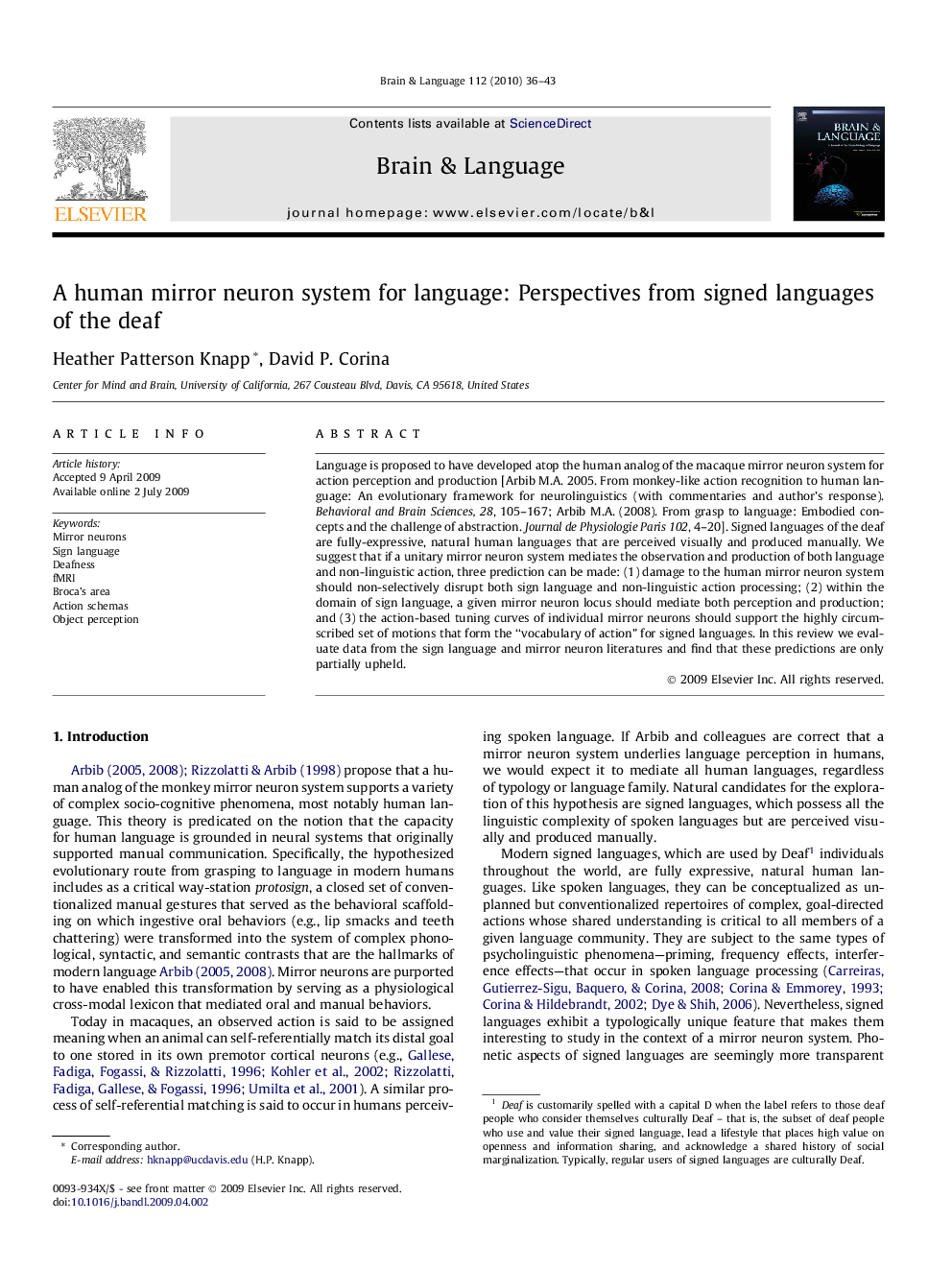| Article ID | Journal | Published Year | Pages | File Type |
|---|---|---|---|---|
| 925710 | Brain and Language | 2010 | 8 Pages |
Language is proposed to have developed atop the human analog of the macaque mirror neuron system for action perception and production [Arbib M.A. 2005. From monkey-like action recognition to human language: An evolutionary framework for neurolinguistics (with commentaries and author’s response). Behavioral and Brain Sciences, 28, 105–167; Arbib M.A. (2008). From grasp to language: Embodied concepts and the challenge of abstraction. Journal de Physiologie Paris 102, 4–20]. Signed languages of the deaf are fully-expressive, natural human languages that are perceived visually and produced manually. We suggest that if a unitary mirror neuron system mediates the observation and production of both language and non-linguistic action, three prediction can be made: (1) damage to the human mirror neuron system should non-selectively disrupt both sign language and non-linguistic action processing; (2) within the domain of sign language, a given mirror neuron locus should mediate both perception and production; and (3) the action-based tuning curves of individual mirror neurons should support the highly circumscribed set of motions that form the “vocabulary of action” for signed languages. In this review we evaluate data from the sign language and mirror neuron literatures and find that these predictions are only partially upheld.
